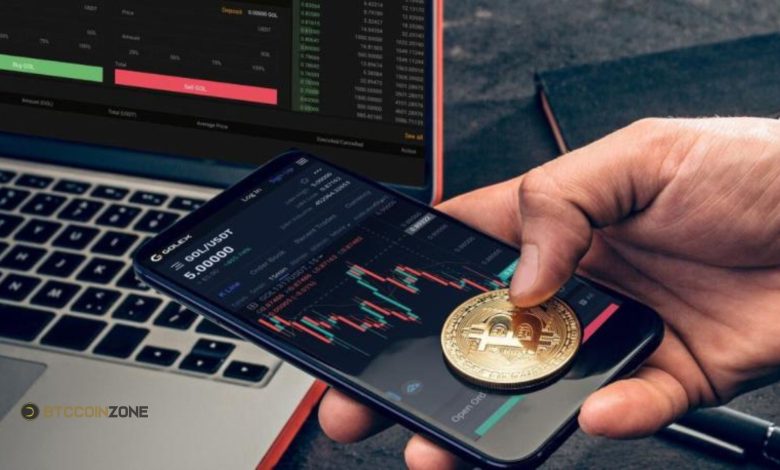Bitcoin Trading Today: Dealing with Digital Currency Volatility

Bitcoin Trading Today: The first and most famous cryptocurrency, Bitcoin, changed the financial world in 2009. The enigmatic Satoshi Nakamoto created Bitcoin, which has become a mainstream financial instrument for traders, institutional investors, and ordinary people. Bitcoin trading now affects the global economic environment, exchanging millions of dollars daily. This article discusses Bitcoin trading, price movements, trading tactics, hazards, and prospects.
What is Bitcoin Trading?
Buying and selling Bitcoins to make a profit from price volatility is known as Bitcoin trading. In contrast to those who purchase Bitcoin intending to hold onto it for the long haul, traders want to profit from the short-term fluctuations in price to take advantage of Bitcoin’s volatility. Binance, Coinbase, and Kraken are jBitcoin’s of the many cryptocurrency exchanges where you may buy and sell Bitcoin.
Trading Bitcoin is very much like trading equities or commodities. Its distinctive selling points are its decentralized nature, worldwide reach, and round-the-clock availability. There are many different kinds of trading that traders can partake in, such as:
- Spot Trading: Buying or selling Bitcoin for immediate delivery.
- Margin Trading: Borrowing funds to trade more prominent positions, magnifying potential gains (or losses).
- Futures Trading: Speculating on the future price of Bitcoin using contracts that settle later.
- Options Trading: Buying or selling contracts that give the right, but not the obligation, to buy or sell Bitcoin at a specific price before a certain date.
Factors Influencing Bitcoin’s Price Today
Like any other financial asset, BitBitcoin’sice is dictated by the laws of supply and demand. Several distinct elements cause Bitcoin’s price volatility:

- Market Sentiment: Bitcoin is Influenced by market sentiment, and news can significantly impact its price. Joyous news, such as institutional adoption or regulatory clarity, can drive the price up, while negative news, such as government crackdowns or exchange hacks, can cause a sharp decline.
- Institutional Adoption: Bitcoin has gained institutional attention in recent years. Tesla, MicroStrategy, and Square have bought vast amounts of Bitcoin, and JPMorgan and Goldman Sachs offer Bitcoin services. Institutional adoption increases liquidity and stability but exposes the asset to macroeconomic variables.
- Regulation: Bitcoin operates in a decentralized, largely unregulated space. However, governments worldwide are beginning to introduce regulatory frameworks for cryptocurrency trading and exchanges. Regulation can impact Bitcoin’s price positively (by providing legitimacy) and Bitcoin’sively (by introducing restrictions or taxes).
- Halving Events: Bitcoin has a fixed supply of 21 million coins, and the rate at which new Bitcoins are introduced into circulation is cut in half roughly every four years in an event known as a “halving.” These events have historically led to prices in” releases d” due to reduced supply, making them significant for traders to watch.
- Macroeconomic Trends: Global economic events, such as inflation, interest rates, and geopolitical tensions, can influence Bitcoin’s price. Many view Bitcoin as a hedge against inflation and currency devaluation so that economic instability can lead to increased demand for the cryptocurrency.
- Whale Activity: Bitcoin is still a relatively illiquid market compared to traditional assets, which means that large holders (often called “whales”) can significantly impact the market. Wh “n whal” s make large transactions, they can cause price swings that traders should be aware of.
Popular Bitcoin Trading Strategies
Bitcoin price swings can be capitalized on by traders employing well-known trading strategies. Bitcoin day traders purchase and sell Bitcoin within a single day to capitalize on short-term fluctuations. Swing trading is another strategy that investors use. They hold a position for a longer time in the hopes of taking advantage of more significant market movements. Despite the volatile short-term price movement, Bitcoin holders are committed to the long-term direction of the cryptocurrency.
Scalpers engage in numerous small trades daily in pursuit of minute price movements, whereas arbitrage traders seek out price differences across other exchanges. Then, there’s trend trading, which is more concerned with the Ethereum market direction than short-term swings. A strategy that prioritizes risk management and market dynamics is essential for success in the very unpredictable Bitcoin trading industry.
Risks Involved in Bitcoin Trading
While Bitcoin trading can be highly lucrative, it is also fraught with risk. Some of the key risks include:
- Volatility: Bitcoin is known for its extreme price swings. While volatility can create profit opportunities, it also means that losses can occur quickly and unexpectedly. Traders must manage their risk carefully and be prepared for significant price fluctuations.
- Lack of Regulation: Although the regulatory environment for Bitcoin is evolving, it remains largely unregulated in many parts of the world. This can lead to uncertainty and potential risks, such as exchange hacks, fraud, or sudden government crackdowns on trading.
- Leverage Risks: Margin trading and futures contracts allow traders to use leverage to amplify gains and losses. While leverage can lead to higher profits, it also increases the risk of losing more than your initial investment if the market moves against you.
- Liquidity Risks: While Bitcoin is one of the most liquid cryptocurrencies, there can still be periods of low liquidity, especially during market stress. Low liquidity can lead to slippage, where a trader’s order is filled at a less favorable price than the trader’s
- Technical Issues: Cryptocurrency exchanges and trading platforms are not immune to technical issues such as downtime, system errors, or delays in executing trades. Such problems can result in missed opportunities or unexpected losses.
Future Outlook for Bitcoin Trading
The continued evolution of institutional usage, legal frameworks, and technological developments bodes well for the future of Bitcoin trading. With more big companies, banks, and financial institutions adding Bitcoin to their offerings, liquidity and stability should improve. While increased regulation has the potential to restrict market access, more precise rules are likely to lead to a safer and more transparent trading environment.

New technologies like the Lightning Network are being developed to improve Bitcoin’s scalability. This would allow for faster and faster Bitcoinmore actions, which could increase demand even more. Furthermore, Bitcoin is growing in popularity. As a medium of exchange or alternative asset class, particularly in periods of economic volatility. It may further establish itself in the international monetary system. However, investors should proceed with caution due to the inherent volatility. The cryptocurrency market and the persistence of exogenous influences, such as global economic conditions, on Bitcoin’s trading environment.
Also Read: Bitcoin Risk Factors and Opportunities and Challenges
In Summary
Trading bitcoinBitcoin’sas exciting chance. However, it also carries a high risk because of the market’s volatility and outside influences like in market sales adoption, legislation, and macroeconomic developments. Bitcoin is a particular asset class for traders. Navigating the ever-changing world of Bitcoin trading requires being informed, having a well-defined plan, and controlling your risk, regardless of whether you’re a long-term investor, swing trader, or day trader. Young professionals must adjust and remain flexible as Bitcoin develops further to take advantage of this ground-breaking digital asset’s potential.




